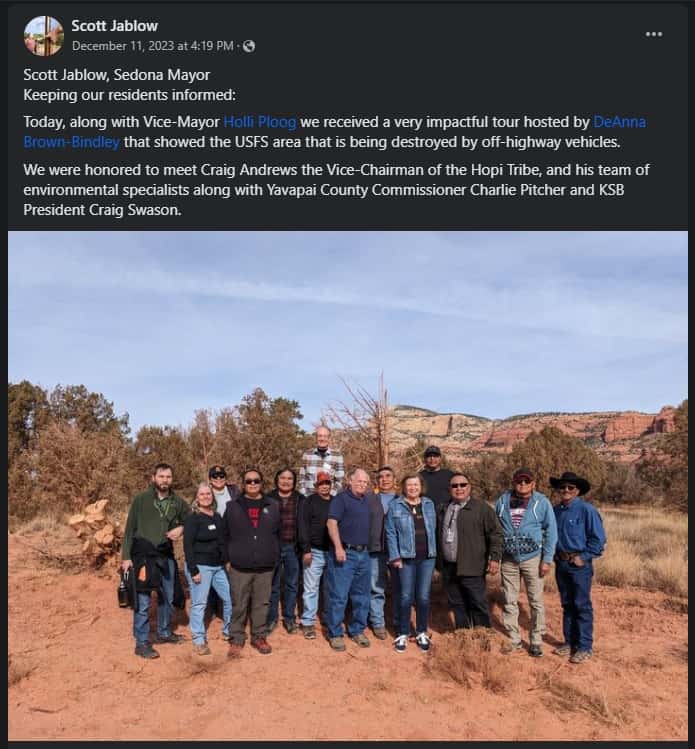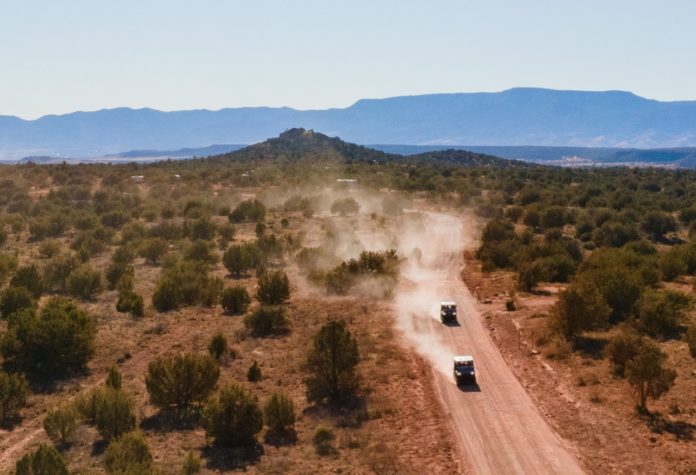Given the ongoing discussion since last April about the danger allegedly posed and damage supposedly caused by OHVs, residents were certainly awaiting the city of Sedona’s technical study of the alleged problem with great anticipation.
Many OHV opponents and perhaps even some owners and users assumed the study would prove that thesis true. But the study showed OHV damage was not statisically significant, or at least no worse that caused by regular vehicles, Jeep tours and a whole host of other trail uses that residents and visitors have no problems with.
When the study, paid for by the Sedona City Council to the tune of $99,000, was finally produced, we assumed the council would accept its results for what they were worth and legislate accordingly.
That’s not what happened, however. Council members were incensed that the study did not reflect their unscientific, preconceived political views that OHVs absolutely must be more deadly to the environment, hazardous to human health and damaging to the scenery that a Jeep tour or a Phoenician with a jacked-up Hummer. Assuming the study would reflect want council wanted politically was wishful thinking at best and nakedly intentional confirmation bias at worst.
It shouldn’t take a rocket scientist to explain how scientific studies work; even if it did, the rocket scientist on the Sedona City Council should have explained it to his non-scientist colleagues: We paid for a scientific study to test a thesis. The study disproved the thesis. Like it or not, data is data and conclusions are conclusions. Move on.
“The good thing about science is that it’s true, whether or not you believe in it,” astronomer Neal DeGrasse Tyson is fond of repeating.
Alexis de Tocqueville lamented in his 1835 and 1840 books “Democracy in America” that most American officials ignored logic, the scientific method and rationality when governing. Yet that’s really how our country was governed until the last half century, when American leaders from local councils to Congress finally determined to use science, studies, reports and data to provide the basis for governance, using rationality and unemotional logic to set the field of play on which political battles could then be fought.
In other words, “We agree the facts are X. Let us discuss policies based on what X has revealed.”
Well, maybe not Congress.
Now, most municipal councils don’t trust their anecdotal experience and govern by their instincts and their gut, but rely on studies, experts and consultants. One would think that’s what Sedona City Council would do — and it does hire a lot of consultants.
Instead, council wants to dismiss the study, write “NUH-UH” in big bold red letters on the report and conclude every page with an emoji of a squinting man with his fingers in his ears.
[Pssst, council, if you want to pay me $99,000 to tell you something you want to hear, you have my number. Let’s talk.]
The council’s reaction to the study exposes the naked political theatre of the OHV discussion. Most residents don’t care about OHVs, even if they think they are annoying and their drivers are reckless or idiots.
That said, the theatre is clearly political, as two of Sedona’s elected officials recently posed for a photo op in the lands west of Sedona with opponents of OHVs and an elected member of the Hopi Tribal Council. This raises several issues.

Firstly, the jurisdiction of council members ends at the Sedona city limits. Residents outside the city have chosen to live there, beyond the city’s control, outside its jurisdiction, for a reason. They do not want the city controlling them and, conversely, do not enjoy the protection or advocacy of the city. For many, that’s the point and the appeal of living in unincorporated areas beyond the boundaries of a municipal jurisdiction. More of the Verde Valley’s residents live outside a municipality than inside and it works fine.
That also means that the municipal leaders are not legally, morally or ethically beholden to those residents, nor should they be.
Secondly, the Hopi Tribe has no political connection to the Sedona area and a best a slim historical one, if any at all.
The Hopi largely migrated north from Central America and what is now Mexico in the 12th century, and have lived at the top of the Coconino Plateau for centuries since, although some Hopi-related ancestors may have lived in that region for at least 2,000 years.
While the Sedona-area Sinagua were also a Pueblo culture like the Hopi, they departed the Verde Valley by 1450 CE for parts unknown. The Pima, Tohono O’odham, Yavapai, Zuni and Hopi very likely absorbed Sinagua migrants, but it’s not clear where they went.
That said, the Yavapai-Apache Nation in Clarkdale and Camp Verde has deeper and more recent connections to Sedona and the Verde Valley.
It’s disappointing that many in Sedona lump all Pai tribes, Athabaskan groups and Pueblo peoples into a single, homogenous ethnicity and don’t see the cultural distinctions and rich diversity of indigenous peoples, repeating the same mistakes as early white colonizers who “settled” the West.
But if council is willing to ignore environmental science for political reasons, we certainly must expect the same when it comes to anthropology.
